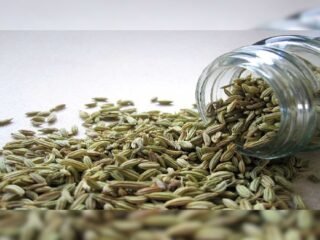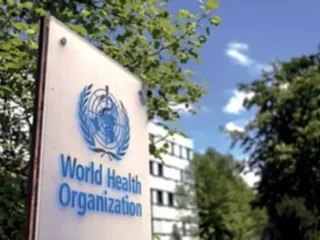New Delhi, 14 November, 2025: Winter brings with it a chill in the air, cozy nights, and festive celebrations. But beneath the seasonal charm lies a serious health concern—a noticeable increase in myocardial infarction, more commonly known as heart attacks, during the colder months.
Multiple studies and hospital reports across the globe have shown that heart attack cases peak during winter, often catching individuals off guard. This seasonal rise affects not only those with known cardiovascular conditions but also seemingly healthy individuals. Understanding why winter is a high-risk period for the heart and learning how to protect yourself can be lifesaving.
What Is Myocardial Infarction?
A myocardial infarction occurs when blood flow to a part of the heart is blocked, usually due to plaque buildup or a blood clot in the coronary arteries. This blockage prevents oxygen from reaching the heart muscle, causing damage or death of the affected tissue.
Common symptoms include:
- Chest pain or pressure (sometimes radiating to the arm, jaw, or back)
- Shortness of breath
- Cold sweats
- Nausea or lightheadedness
Immediate medical attention is crucial because early treatment can save heart muscle and lives.
Why Heart Attacks Increase in Winter
1. Cold Temperatures Constrict Blood Vessels
One of the most direct effects of cold weather on the cardiovascular system is vasoconstriction—the narrowing of blood vessels. This physiological response is designed to conserve body heat, but it has significant cardiovascular implications:
- Narrowed arteries increase blood pressure.
- The heart must work harder to pump blood.
- For individuals with underlying heart disease, this added stress can trigger a heart attack.
Even brief exposure to extreme cold can increase the risk, especially in the elderly or those with high blood pressure.
2. Increased Blood Viscosity and Clotting
In cold weather, blood tends to thicken slightly, and platelet activity may increase. This makes it easier for clots to form, which can block coronary arteries. Combined with constricted blood vessels, this creates a dangerous environment for the heart.
Furthermore, dehydration—a common but often overlooked issue in winter—can increase blood viscosity, raising the risk of thrombotic events.
3. Seasonal Respiratory Infections
Winter is prime season for respiratory infections such as the flu, pneumonia, and other viral illnesses. These infections:
- Trigger systemic inflammation, which can destabilize plaques in arteries.
- Increase the oxygen demand of the body.
- Place additional stress on the heart.
Several studies have found a direct link between influenza infections and increased risk of myocardial infarction, especially in older adults.
4. Sudden Physical Exertion in Cold Weather
Many heart attacks occur after abrupt physical activity in cold temperatures—such as shoveling snow, rushing to work, or engaging in winter sports. These activities can be dangerous because:
- Cold air and sudden exertion rapidly increase blood pressure and heart rate.
- The heart works harder while receiving less oxygen due to vasoconstriction.
- For individuals with underlying heart issues, this can be a critical tipping point.
Cardiologists often caution against overexertion during cold mornings or immediately after meals, when the heart is already under strain.
5. Lifestyle and Behavioral Changes
Winter often leads to less physical activity, heavier meals, and increased alcohol consumption—a combination that can negatively impact heart health:
- Reduced activity lowers cardiovascular fitness.
- High-calorie foods increase cholesterol and triglycerides.
- Alcohol raises blood pressure and can trigger arrhythmias in some individuals.
These seasonal habits, combined with physiological stressors, further increase the likelihood of heart attacks.
6. Vitamin D Deficiency
Less sunlight in winter leads to lower vitamin D levels, which are associated with:
- Increased risk of cardiovascular disease
- Higher blood pressure
- Weakened immune function
While vitamin D deficiency doesn’t directly cause heart attacks, it can contribute to an overall environment of higher cardiovascular vulnerability.
Who Is Most at Risk?
While anyone can experience a heart attack in winter, certain groups are at higher risk:
- People with coronary artery disease, hypertension, or diabetes
- Older adults, especially over 60
- Smokers and individuals with sedentary lifestyles
- People with a family history of heart disease
- Those recovering from previous cardiac events
These groups should be especially cautious during the colder months and adopt preventive measures.
How to Protect Your Heart During Winter
1. Keep Warm and Avoid Sudden Cold Exposure
- Dress in layers, including hats, gloves, and thermal socks.
- Warm up the car before driving on cold mornings.
- Avoid staying outdoors for extended periods in freezing temperatures.
- Use heating devices indoors to maintain a comfortable ambient temperature.
Keeping the body warm helps maintain normal blood flow and reduces the risk of vasoconstriction.
2. Exercise Safely Indoors
- Choose indoor workouts like yoga, treadmill walking, resistance band exercises, or stationary cycling.
- If exercising outdoors, warm up slowly and avoid sudden bursts of activity.
- Stay hydrated, even if you don’t feel thirsty in cold weather.
Regular exercise helps strengthen the heart, maintain healthy blood pressure, and support weight management.
3. Eat a Heart-Healthy Diet
- Prioritize fruits, vegetables, whole grains, and lean proteins.
- Include omega-3-rich foods like fish, walnuts, and flaxseeds to reduce inflammation.
- Avoid excessive salt, sugar, and processed foods.
- Limit alcohol intake, especially during holiday gatherings.
A balanced diet supports optimal cardiovascular function and reduces cholesterol buildup in arteries.
4. Manage Stress
Winter can bring holiday stress, financial worries, or seasonal mood changes, all of which can impact the heart. Effective stress management includes:
- Deep breathing or meditation
- Gentle stretching or yoga
- Talking to friends, family, or mental health professionals
- Taking regular breaks from stressful situations
Lower stress helps regulate blood pressure and heart rate, reducing cardiac risk.
5. Stay Up to Date with Medical Checkups
Regular monitoring of cardiovascular health is crucial, especially in winter:
- Check blood pressure regularly.
- Monitor cholesterol and blood sugar levels.
- Take prescribed medications consistently.
- Get flu and pneumonia vaccinations to reduce infection risk.
Routine care ensures early detection of problems and better prevention of complications.
6. Avoid Overexertion
- Don’t shovel snow or lift heavy objects alone if you have heart issues.
- Take frequent breaks during chores.
- Avoid exercising or doing strenuous work in freezing temperatures.
Pacing your activities and avoiding overexertion can prevent sudden cardiac stress.
7. Recognize Early Warning Signs
Knowing the early symptoms of a heart attack can save lives. Watch out for:
- Chest pressure or discomfort
- Shortness of breath
- Dizziness, fatigue, or lightheadedness
- Nausea or pain radiating to the arm, jaw, or back
If these symptoms occur, seek emergency medical attention immediately. Prompt treatment significantly improves outcomes.
Special Considerations for High-Risk Individuals
People with pre-existing cardiovascular conditions should take extra precautions:
- Avoid going outdoors early in the morning when temperatures are lowest.
- Keep a supply of prescribed medications easily accessible.
- Discuss winter heart health plans with a cardiologist.
- Use home monitoring devices to track blood pressure and heart rate.
Being proactive can help prevent heart emergencies during the coldest months.
Winter is a season of beauty and togetherness, but it also brings unique risks to heart health. Cold temperatures, increased blood clotting, seasonal infections, lifestyle changes, and stress all contribute to a spike in myocardial infarction cases during these months.
The good news is that most of these risks are manageable through awareness and preventive action. By staying warm, maintaining a healthy lifestyle, monitoring your heart health, and seeking timely medical care when needed, you can significantly reduce your risk of heart attack in winter.
Protecting your heart isn’t just about surviving the cold—it’s about thriving through it with smart, informed choices.







